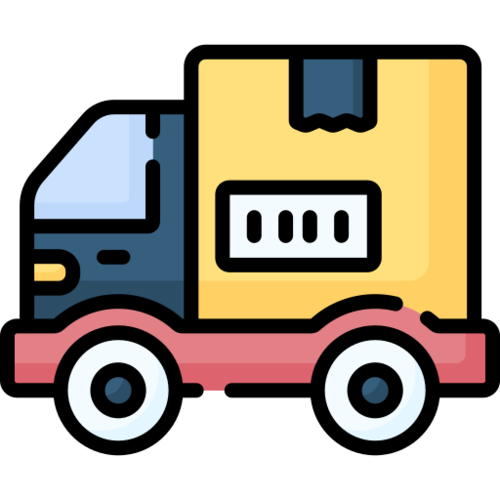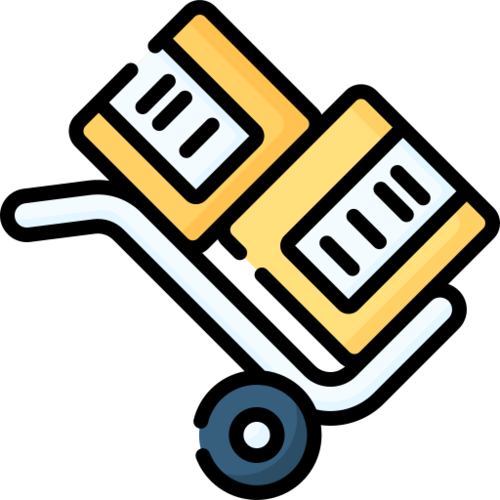Amazon is clearly winning the e-commerce game right now, and many brands are no longer considering whether to launch on Amazon, but how. If you have decided to sell on Amazon, your first decision is one of the most critical you will make: Will you become a Vendor or a Seller?
In this guide, we’ll weigh the advantages and disadvantages to each method. There’s a lot of ground to cover, but don’t be intimidated -- If you are already researching Amazon fulfillment, your brand is well on its way to making money on Amazon.

Vendor Central is Amazon’s first-party retail model and an invite-only program initiated by the Amazon Vendor Management (Buying) team. This model is attractive for many large national brands who prefer a traditional retail fulfillment method.
Here is how Vendor Central (1P) works. Amazon issues a purchase order (in most cases, multiple) to a fulfillment center (FC) as an initial order, using quantities based on algorithmic demand. The brand ships the e-commerce ready product out from their warehouses to the appointed FC. At that point, Amazon owns the inventory and handles the process of shipping the product to the customer.
As sales continue to generate, POs will generate from said-demand until the supplier indicates an item is out-of-stock or obsolete. Amazon purchases the inventory at a wholesale cost, which is determined by the brand during initial product setup. Payment is similarly issued based on terms negotiated between Vendor Management and the brand.
Benefits of Vendor Central
Vendor Central offers a huge benefit of Amazon shipping your inventory with Prime as well as handling all facets of shipping and customer service. Customers shopping on Amazon see the message “Ships and sold from Amazon.com,” in the Buy Box, which indicates that the SKU is a 1P item. This option is extremely convenient for most brands who are unable to hold large amounts of overhead and prefer that Amazon holds the burden of carrying and fulfilling inventory.
Disadvantages of Vendor Central
There are a few downsides to Vendor Central though. First, Amazon’s ordering algorithm is highly unpredictable and can send POs with varying quantity levels based on how it reads demand. This causes a lot of instability for forecasting Amazon demand, especially around peak or ramp-up time periods. Brands can use the Demand Forecast, found in Amazon Brand Analytics (formerly known as Amazon Retail Analytics) as a guide, however most sellers will say that the 26-week outlook is inaccurate.
Second, if a brand sells a product into Amazon at a wholesale cost, it is very difficult to increase those costs later through Amazon’s self-service tool in Vendor Central. Amazon’s system will often auto-reject cost changes citing issues to margin. The inability to change cost also has impact to Amazon’s product terms; like any retailer, Amazon does review and increase product terms annually, which leads to higher deductions off-invoice for your inventory payments.

Brands considering the third-party platform, Seller Central, have three fulfillment options to ship product to customers on Amazon: Fulfillment by Amazon (FBA), Fulfillment by Merchant (FBM), or Seller Fulfilled Prime (SFP).
Each option has a different operational and fee structure, so it is up to the brands to determine which method will ultimately build the most revenue and be the most profitable. Below, we’ll dive into each model, address the features and benefits, and discuss the fees associated.
Fulfillment-by-Amazon (FBA)
FBA is a service provided by Amazon to process picking, packing, shipping, and customer service, where Amazon takes on the bulk of the workload. Sellers create shipment plans though Seller Central, and Amazon tells the sellers which fulfillment centers to ship to. Amazon then stores the inventory, and will process, pick, and pack the order to ship to the customer. FBA is typically the preferred option of the three fulfillment methods; approximately 66% of all sellers use FBA according to JungleScout.
Benefits of FBA
FBA is widely popular amongst sellers who want to use Amazon’s supply chain for scalability and efficiency. Items shipping through FBA are eligible for Prime shipping, which increases the customer audience and benefits shoppers with the same Amazon-direct shipping services. FBA also provides a higher probability of winning the coveted Buy Box, because Prime eligible products are more likely to win.
Another major benefit of FBA is that Amazon is a 24/7 store, and therefore Amazon’s fulfillment works 24/7 too. Sellers do not have to worry about order processing or fulfillment around the clock knowing that Amazon takes on the workload. Amazon handles returns as well, which alleviates many of the phone calls, physical product returns, and fees associated with manual processing.
Disadvantages of FBA
Although FBA may seem like a dream for any seller aiming to launch an Amazon business, there are some downsides that could make you ultimately choose another route.
Amazon charges fees across storage (monthly and long-term), picking and packing, as well as a referral fee off the selling price (usually 15-17% for most categories). Referral fees alone could kill businesses that play in opening price point markets, and storage fees can add up for low-turning and/or heavy weight inventories. Sellers can check fee estimates using Amazon’s revenue calculator.
With FBA, Amazon also takes complete control of all aspects of customer service. This can be frustrating for sellers with a strong customer service department who would like to analyze returns on damaged goods or address customer complaints directly.
Fulfillment-by-Merchant (FBM)
When using FBM, sellers create listings for their individual products through Seller Central but manage the fulfillment services of picking, packing, shipping, and customer service themselves. This is usually done through owned D2C operations or a third-party logistics provider (3PL). When a seller uses FBM, customers on Amazon see a buy box message that says “Ships from X and sold by X.” FBM is not the most popular option, however it might be the best option depending on the business type.
Advantages of FBM
Items with a heavy weight or low turnover can avoid Amazon’s storage and pick fees by using FBM, which will lead to higher profitability. Sellers also own the customer service portion of the business, which can be crucial for new-to-platform brands or for products with technical or expensive components. Through FBM, sellers can interact directly with the customer, potentially reducing negative customer feedback and reviews. Owned returns processing also allows for that sellers can inspect their returns; whereas through FBA, Amazon will handle all returns and will deem product “unsellable” if a customer returns a product citing missing parts or damages. Amazon tends to err on the side of the customer, which sellers can find difficult if there are high replacement costs associated with the product.
Disadvantages of FBM
The most obvious differentiating factor with FBM is that sellers lose out on Prime eligibility, which is a huge conversion and buy box driver for 3P sellers. FBM sellers typically find the buy box difficult to win, especially against products or categories where Amazon 1P or other FBA sellers have existing offers. Overall logistics are also difficult with FBM if your company does not have functional and lower-cost D2C capabilities available. The convenience of FBA from inventory storage to shipping allows sellers to focus on product marketing and advertising, building components of retail readiness for their products.
Seller Fulfilled Prime (SFP)
Amazon started Seller Fulfilled Prime (SFP) in 2015. SFP is an option that allows sellers to fulfill to customers directly and receive Prime eligibility status, but they must qualify for Amazon’s strict shipping requirements and fulfill the Prime two-day promise at no extra charge to the customer. Not all sellers are eligible to choose this program; they must first have a Professional Selling account and be eligible for the Premium Shipping program. Sellers who offer Premium Shipping options and complete the Prime shipping trial can register for SFP and enroll in a trial period, although currently Amazon is only accepting a waitlist.
SFP requirements are as follows directly from Amazon:
- Offer Premium Shipping Options
- Ship over 99% of your orders on time
- Have an order cancellation rate of less than 0.5%
- Use Amazon Buy Shipping Services for at least 99% of orders
- Deliver orders with our supported Seller Fulfilled Prime carriers
- Seller must agree to the Amazon Returns Policy
- Allow for all customer service inquiries to be dealt with by Amazon
Benefits of SFP:
If the trial period is completed successfully, sellers win the Prime badge and improve their buy box discoverability. SFP can often be the cost-efficient option especially for high-ticket or slow-turning items because it avoids Amazon’s storage fees. Similar to FBM, SFP provides a greater control of inventory flow and limits the amount of inventory split across Amazon fulfillment centers. Sellers can pause SFP if needed and limit the amount of Prime orders they receive in one day.
Disadvantages of SFP:
SFP can be costly because of Amazon’s strict standards, so sellers must carefully weigh the profitability of the program. Initial costs can be expensive, because choosing the right staff, warehousing, and shipping partners are key to ensuring quick turnaround. Costs increase for certain zip codes if they are affected by shipping delays. Finally, SFP sellers are still charged a referral fee.
Many Options Available for Your Business Needs
Sellers on Amazon have options available for fulfillment. It’s important to consider that the most convenient option might not be the most profitable for a business. Each product and category has different fee structures that change as business grows, so profitability models are essential to determining which fulfillment method is best for you Product category, size, weight and suggested retail price are key factors for determining the best fulfillment option, but keep in mind that the ultimate goal should be receiving Prime eligibility.



